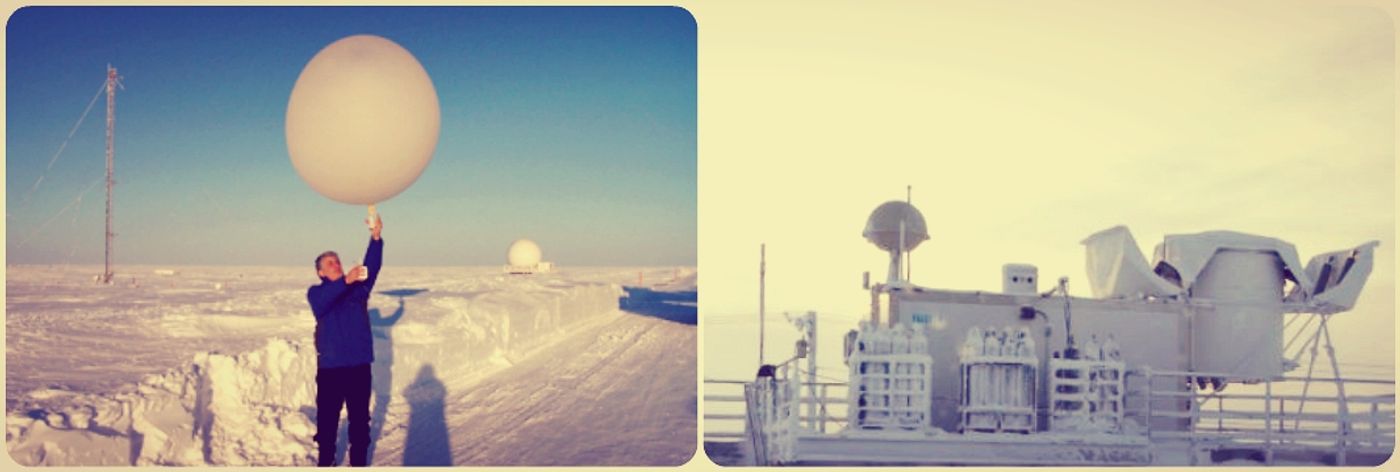Can Machines Safely Replace Alaskan Weather Service Employees?
In a move contested by some Alaskans, the National Weather Service is filling some human roles with automated weather stations made in Finland. The new mechanized stations will release weather balloons several times a day that collect data – a job usually done by teams of several NWS employees. NWS claims no jobs will be lost and that Alaska’s remote weather stations are too hard to staff. Members of the National Weather Service Employees Organization say the NWS has been cutting back on hours and purposefully makes the posts unattractive and hard to fill by posting them as lower paygrade, temporary positions.
A pilot of the Finnish "Autosonde" stations was run in Kodiak in October 2017 with a price tag of more than $900,000. National Weather Service Acting Director of Public Affairs Susan Buchanan told the Anchorage Daily News it was considered successful:
Now that we have been able to demonstrate that autolaunchers are efficient, effective and resilient, we'll be rolling them out across Alaska throughout the rest of this year, in Fairbanks, Annette, Yakutat, Barrow, St. Paul and Bethel. Autolaunchers will be deployed in Anchorage and the final five Alaskan weather service offices in 2019.
The machines will cost $1.2 million each to install but NWS says the fees will not be paid by taxpayers. Buchanan said the cost is "funded under a program that auctioned off government-held frequency spectrum to the private sector." This process typically involves the government selling rights to transmit signals over specific bands of the electromagnetic spectrum to wireless, TV and radio companies. She added that the total annual savings associated with the automation program would near $1 million, but that no staff would be lost or downgraded.
Some employees claim they are being given an ultimatum to move to new locations or lose their jobs. NWSEO reps also say the NWS has cut back on hours and services at Alaskan stations, increasing staffing shortages, and knowingly makes remote jobs hard to fill. For example, Richard Hirn, general counsel for the organization, said that GS-10 pay scale jobs are relisted as GS-5 or 7. He said:
[H]ere's the game they're playing … they bid them at a GS-5 and 7, and they are saying they're only temporary positions. So, nobody wants to move to Barrow, Alaska, for a GS-5 or 7 job that's only going to be for a year. And they say, 'we have to automate because nobody wants the job.’
A GS-10 employee earns between $61,830 and $80,380 in Alaska each year in 2018, a GS-7 between $45,900 and $59,669, and a GS-5 between $37,055 and $48,174, according to the U.S. Office of Personnel Management.
The Autosonde site states that the Automatic Sounding Station “automates the synoptic upper-air observations and saves costs and gives the freedom to extend the coverage of upper-air networks everywhere.”
Fairbanks Forecaster Jim Brader, who is also the Alaska region chair for NWSEO, said the automated balloon systems can’t fully replace human specialists. He said sometimes, the machines report it is snowing when it is not or fail to identify ground blizzards that don’t bring falling snow but are still hazardous. Rural NWF radio services were also removed in 2017, along with some sea ice, sea surf and snowfall observation programs.
President Donald Trump's fiscal year 2019 budget also requests a possible consolidation of the NWS Tsunami Warning Center in Palmer, Alaska, with one in Hawaii. In response to these potential closings or relocations and the lack of adequate staffing in Alaskan weather stations, congressional representatives from Alaska and Hawaii wrote to Commerce Secretary Wilbur Ross in March.
"This is simply unacceptable. Many of these NWS operational positions directly support public safety and should be filled by permanent, full-time scientists, forecasters, technicians and support personnel,” the letter stated.
Sources:









